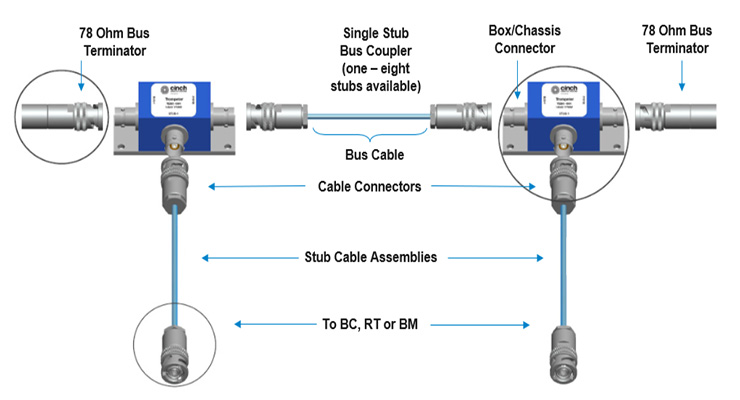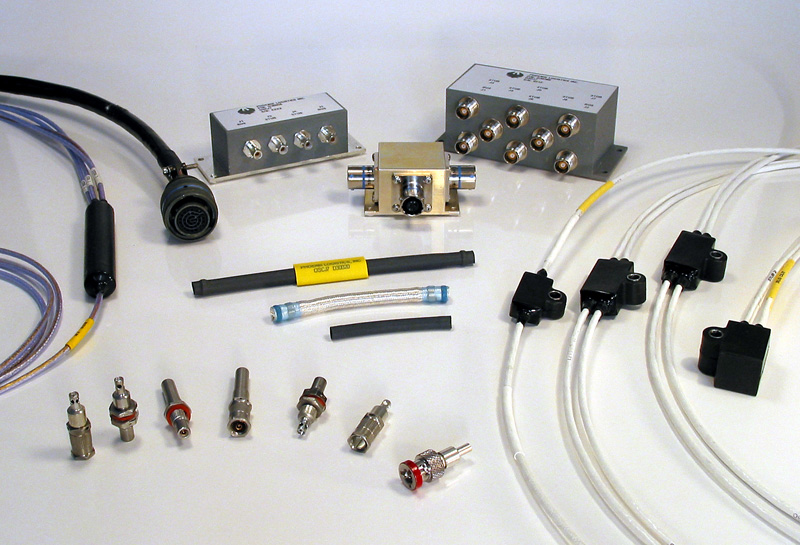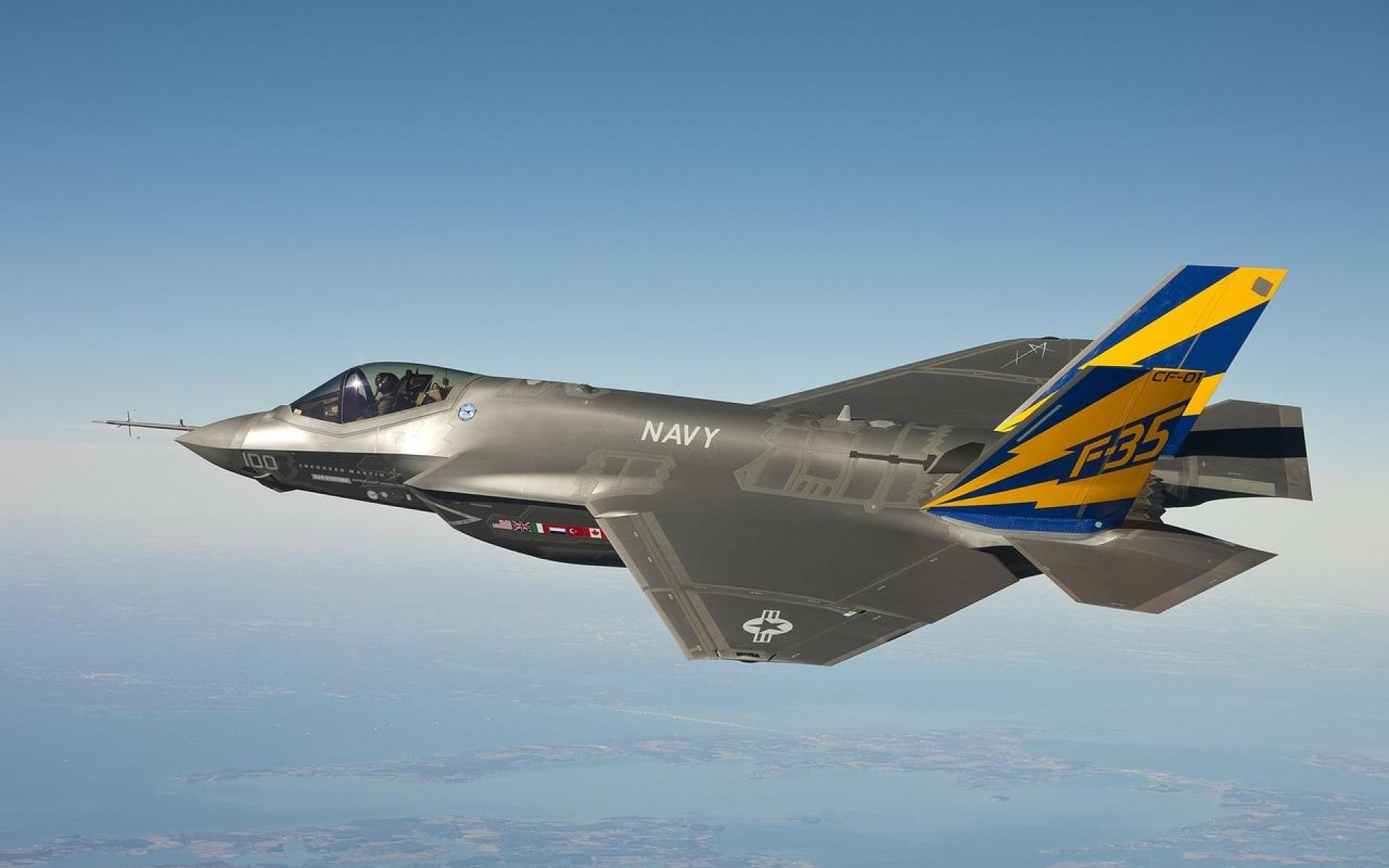This white paper provides a comprehensive overview of MIL-STD-1553 connectors, focusing on their types, features, and significance in avionics. MIL-STD-1553 connectors are widely used in the aerospace industry for reliable data communication between avionics systems. Understanding the intricacies of these connectors is essential for engineers, manufacturers, and professionals working in the aviation sector. This paper aims to shed light on the key aspects of MIL-STD-1553 connectors, including their design, specifications, benefits, and applications.
Introduction
MIL-STD-1553 connectors are standardized electrical connectors used in military and commercial aircraft to establish communication links between different avionics subsystems. These connectors play a crucial role in ensuring reliable data exchange, control, and monitoring of critical avionics systems.
Types of MIL-STD-1553 Connectors
There are various types of MIL-STD-1553 connectors available, designed to meet different application requirements. The most common types include:
- Circular Connectors: These connectors have a circular form factor and are often used in military aircraft applications. They provide a secure connection and are known for their robustness and resistance to environmental factors such as shock, vibration, and moisture.
- Rectangular Connectors: Rectangular MIL-STD-1553 connectors are commonly found in commercial aviation and provide a more compact and lightweight solution. They offer a high-density interface and are suitable for applications where space is limited.

Key Features and Specifications
MIL-STD-1553 connectors adhere to strict military standards and come with specific features and specifications. Some of the key features include:
- High-Speed Data Transmission: These connectors support high-speed data transfer, allowing for efficient communication between avionics systems.
- EMI/RFI Shielding: MIL-STD-1553 connectors are designed to provide excellent electromagnetic interference (EMI) and radio-frequency interference (RFI) shielding, ensuring data integrity and system reliability.
- Environmental Resilience: These connectors are built to withstand harsh environmental conditions, including extreme temperatures, moisture, and vibration, making them suitable for aviation applications.
- Secure Connection: MIL-STD-1553 connectors offer a secure and reliable connection, minimizing the risk of signal loss or disconnection during critical operations.
Importance in Avionics
MIL-STD-1553 connectors are vital components in avionics systems, serving multiple purposes:
- System Integration: These connectors enable the integration of various avionics subsystems, such as flight control systems, navigation systems, and communication systems, ensuring seamless data exchange and system interoperability.
- Fault Detection and Isolation: MIL-STD-1553 connectors facilitate the monitoring of avionics systems, allowing for efficient fault detection and isolation. This aids in troubleshooting and maintenance procedures, reducing downtime and enhancing overall system reliability.
- Safety and Redundancy: In aviation, safety is paramount. MIL-STD-1553 connectors support redundant configurations, ensuring system resilience and providing backup options in case of failures.
- Standardization: MIL-STD-1553 connectors adhere to industry standards, promoting compatibility and interoperability across different aircraft platforms. This standardization simplifies system design, integration, and maintenance processes.
Applications
MIL-STD-1553 connectors find extensive applications in the aerospace industry, including:
- Military Aircraft: These connectors are widely used in military aircraft for mission-critical applications, including data communication between avionics systems, weapon systems integration, and flight control.
- Commercial Aircraft: MIL-STD-1553 connectors are employed in commercial aircraft for various purposes, such as flight management systems, navigation systems, in-flight entertainment, and cabin control.
- Spacecraft: The reliability and robustness of MIL-STD-1553 connectors make them suitable for space applications, where they are used in satellite communication systems, onboard control, and data handling.
- Unmanned Aerial Vehicles (UAVs): UAVs rely on MIL-STD-1553 connectors for secure communication between the control station and the unmanned platform, enabling remote operation and real-time data transmission.
- Avionics Test Equipment: MIL-STD-1553 connectors are also utilized in avionics test equipment, providing a standardized interface for testing and validating avionics systems during development and maintenance.

Future Developments
As the aviation industry continues to evolve, MIL-STD-1553 connectors are also subject to advancements. Some ongoing developments include:
- Miniaturization: Efforts are being made to further reduce the size and weight of MIL-STD-1553 connectors to accommodate the miniaturization trend in avionics systems.
- Increased Data Rate: Research is being conducted to enhance the data transfer capabilities of MIL-STD-1553 connectors to support higher bandwidth requirements in modern avionics applications.
- Enhanced Environmental Protection: Continual improvements are being made to enhance the environmental resilience of MIL-STD-1553 connectors, allowing them to withstand even more extreme conditions.
Conclusion
MIL-STD-1553 connectors are critical components in avionics systems, providing reliable and secure data communication in military and commercial aircraft, spacecraft, UAVs, and avionics test equipment. Their adherence to stringent standards, robust design, and high-performance features make them indispensable in the aerospace industry. By understanding the types, features, and importance of MIL-STD-1553 connectors, aviation professionals can make informed decisions regarding their selection, integration, and maintenance, ultimately ensuring the safety, efficiency, and reliability of avionics systems.
In summary, MIL-STD-1553 connectors offer high-speed data transmission, EMI/RFI shielding, environmental resilience, and a secure connection. They are crucial for system integration, fault detection, safety, and standardization in avionics. These connectors find applications in military and commercial aircraft, spacecraft, UAVs, and avionics test equipment. Ongoing developments focus on miniaturization, increased data rate, and enhanced environmental protection. By staying informed about MIL-STD-1553 connectors, the aviation industry can continue to advance and meet the demands of modern aerospace technology.





